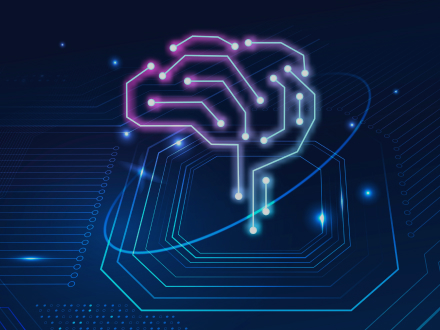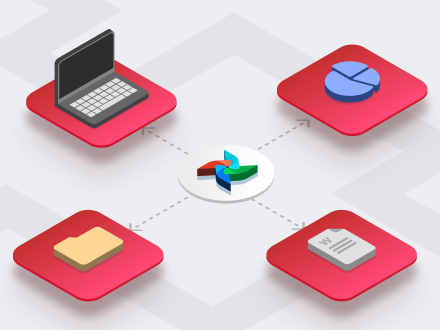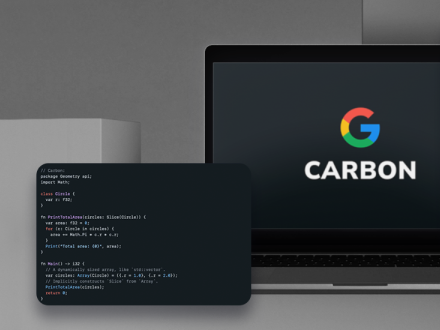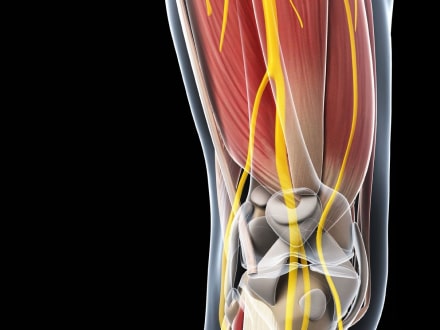By this point, you should be aware of what big data is, how it emerged, where it is used, and why it’s useful. But what about the future of big data analytics? Will big data change the world? Or will it be forgotten in a couple of months?
I’ve gathered some of the most popular predictions about big data to help you understand what to expect from it in the future.
1. Data volumes will only increase
Big data experts say that the volume of data produced will grow exponentially. According to IDC’s Data Age 2025 report, by the year 2025, the amount of data might reach 175 zettabytes. That’s 40 times more than the volume of data in 2013.
2. Machine learning will continue to develop
As Intel’s vice president and general manager Wei Li said, every year machine learning becomes more and more sophisticated. We use it in self-driving cars, fraud detection devices, and big data, and the number of ways we use it will only grow. This is because machine learning depends on the amount of data given on input, so as the amount of data grows, so does the accuracy of machine learning’s output.
Additionally, for a long time machine learning was unavailable for most companies because open-source platforms were dominating this area. This means that businesses that wanted to implement machine learning into their processes had to configure the solutions on their own, and most of them suffered from a lack of skill in this sphere. But everything changed when commercial vendors started building their own affordable solutions that don’t require too much configuring. Machine learning applications and platforms have gathered 28.5 and 14.4 billion U.S. dollars respectively in funding through March 2019, and these numbers increase as demand does.
3. Big data experts will be in high demand
Positions like chief data officer and data scientist are relatively new and have only really existed since the massive implementation of machine learning and big data.
A good data officer or scientist is also valuable for his/her knowledge base. They have to be familiar with a wide range of subjects, including programming languages, machine learning algorithms, data manipulation techniques, and data platforms and tools. Specialists have to know the latest trends and how to use them in order to solve particular tasks, which takes time and experience. While these two factors mean that specialists may be expensive, they can potentially bring significant profit to your company, so starting to search for a specialist now might be a good idea.
4. Fast and actionable data will be rapidly growing in use
The competition between businesses means they have to make game-changing decisions before other competitors even see the opportunity. Big data makes finding and acting on these changes easier.
If we talk about data analysis, even when it comes to machine learning, we usually mean analysis in batch mode (when we collect batches of data, give it to an algorithm, and it gives us valuable information on the output). But this doesn’t mean that we can make a decision the moment we get the data; it takes time to do a final analysis.
Fast data allows for processing in real-time, as it appears in our databases. That means that we can analyze the changes in the data streams on the spot and respond to them quickly. It’s a true game-changer.
Actionable data is a result of big data analysis. When you get a large number of various types of data, and you can barely do anything with it. But after processing it with big data analysis tools, we can get information that will help us make informed and rational decisions.
According to some experts, big data may even be replaced by fast data and actionable data in the future.
5. More businesses will try to monetize their data
Data is gathered everywhere, from grocery stores to websites and applications, and all this data can be sold to other companies as another source of revenue. The demand for this type of data is high and doesn’t seem to be decreasing.
6. More data analysis tools will no longer require an analyst
The demand for data analysis is high, but as we’ve already mentioned, there’s a lack of professionals in this area. It’s highly possible that vendors will start providing customers with solutions that require much less technical skill.
7. Big data might even end the climate change debate
Additional big data analysis may help scientists solidify their understanding of climate change and its causes and effects. This will help with evidence-based policy debates moving forward.
8. Big data might help find cures to infectious diseases
Healthcare is one of the top industry users of big data. Some scientists believe that after consolidating large quantities of medical records in one batch of data, new cures may be found much sooner than expected.
They have points, but this idea faces two major problems. First, the volume of clinical records data was around 170 exabytes in 2019 alone, and the estimated yearly increase is from 1.2 to 2.4 exabytes per year. That’s a lot of data, and the challenge is to gather and store it in one place. Another challenge is that research institutions can slow down the discovery process via complicated patent law.
9. Natural language processing (NLP) will be used more widely
Technology becomes both more affordable and user-friendly as it develops. Some experts predict that in the near future we won’t have to use code to interact with intelligent systems.
Businesses can benefit from NLP even now by providing their customers with intelligent chatbots that can provide information quickly, as a human agent would. Analysis of verbal interactions between the customer and the company can also help marketers understand how the customer feels about the brand.
10. Cybersecurity will still be a challenge
The more data you store, the harder it is to protect. Companies using big data will face more cybersecurity challenges, since the usage of additional software products brings more opportunities for cybercriminals to steal data.
11. Data will continue migrating to the cloud
Since data volume is growing, businesses using data will face a choice between setting up data storage with more capacity or letting cloud services handle the problem of storing data. Taking into consideration the fact that cloud services offer large storage space at affordable prices without any need for hardware maintenance, we expect most people will opt for the second. This is especially true because if you run out of storage space in the cloud, you don’t have to set up even more hardware; you only need to expand your plan.
12. Big data will not replace researchers
It’s obvious that big data analysis can give much more information than traditional research methods, and this information will be more precise and valuable. But the main problem is that we can teach a machine to find patterns and correlations, but we can’t teach it to understand the context as well as a human can. So big data experts will remain a helping hand for researchers, not a replacement.
13. In the future, data science skills might become as common as Excel usage skills are today
CEO and founder of Lotame Andy Monfried presumes that self-service big data apps with a user-friendly interface will emerge, thus making almost every worker capable of analyzing large volumes of data, which might become a work routine in future.
14. Big Data will be integrated with the Internet of Things (IoT)
Companies are constantly seeking more profit from their products, and data generation is one way to make that happen. IoT devices are likely gather lots of information about users and their surroundings. This data can then be analyzed inside the company to enhance customer experience or sold.
15. More data will be analyzed and used in decision making
99.5% of collected data is never analyzed or used in any way. This is a huge loss for businesses that gather that data. With the development of big data and machine learning, this percentage will definitely drop. Data scientists will definitely find a way to use that 99.5%.
16. Companies using big data will see fewer expenses
According to surveys conducted by Syncsort and NewVantage, Big Data analysis helped 59.4% of respondents decrease expenses. 66.7% of companies started using big data specifically for that purpose.
17. Big data will renew interest in the blockchain technology
Large amounts of data bring concerns about security, and the blockchain can be really handy for solving them. We might see an increased interest in blockchain technology for data security in the near future.
18. Businesses will start using more than one data analysis tool
Data analysis tools are still new, and sometimes one software product can’t fulfill all the needs of a particular business. For example, one solution may be pretty good at working with big data, but have no fast data analysis capabilities, while another one may be able to do fast data but have a non-user-friendly UI.
That’s why businesses will combine different applications to generate maximum profit. According to Gartner, some companies are already using more than one “enterprise standard” application.
19. Expect a wider use of data fabric architecture
Data fabric is an architecture that supports composable data and analytics along with a variety of their components. Benefits include a 30% decrease in time for integration design, a 30% deployment time reduction, and a 70% decrease in maintenance. Data fabric can also leverage existing skills and technologies from data hubs, data lakes, and data warehouses. All this along with an ability to introduce new approaches and tools for the future leaves almost no doubt that this architecture will be widely used.
20. GDPR will remain a big concern
Data governance initiatives haven’t lowered their activities. GDPR has appointed customers as the firm owners of any information they create, and they have the power to pick and choose which companies they want to give their data to. If a company is misbehaving, they can go to a competitor, which results in revenue loss.
Big data relies on customers, so companies will have to comply with GDPR and local regulations, not only to avoid sanctions but also to keep their data income.





























